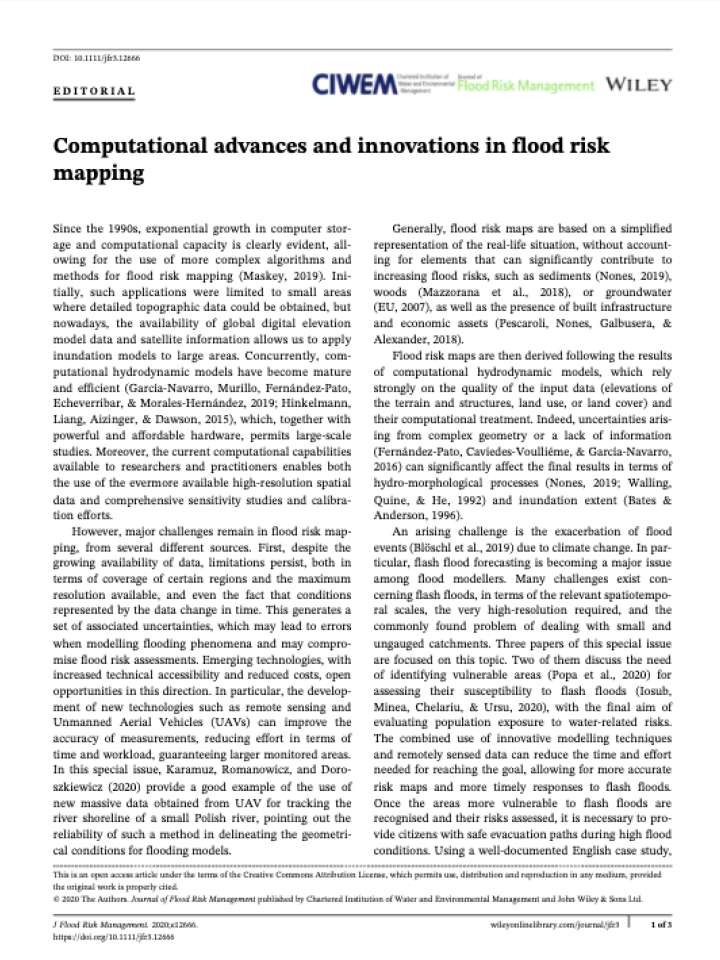Computational advances and innovations in flood risk mapping
Since the 1990s, exponential growth in computer storage and computational capacity is clearly evident, allowing for the use of more complex algorithms and methods for flood risk mapping (Maskey, 2019). Initially, such applications were limited to small areas where detailed topographic data could be obtained, but nowadays, the availability of global digital elevation model data and satellite information allows us to apply inundation models to large areas. Moreover, the current computational capabilities available to researchers and practitioners enables both the use of the evermore available high‐resolution spatial data and comprehensive sensitivity studies and calibration efforts.
However, major challenges remain in flood risk mapping. Some of them are underlined in this editorial. Despite the growing availability of data, limitations persist, both in terms of coverage of certain regions and the maximum resolution available, and even the fact that conditions represented by the data change in time.
Explore further
